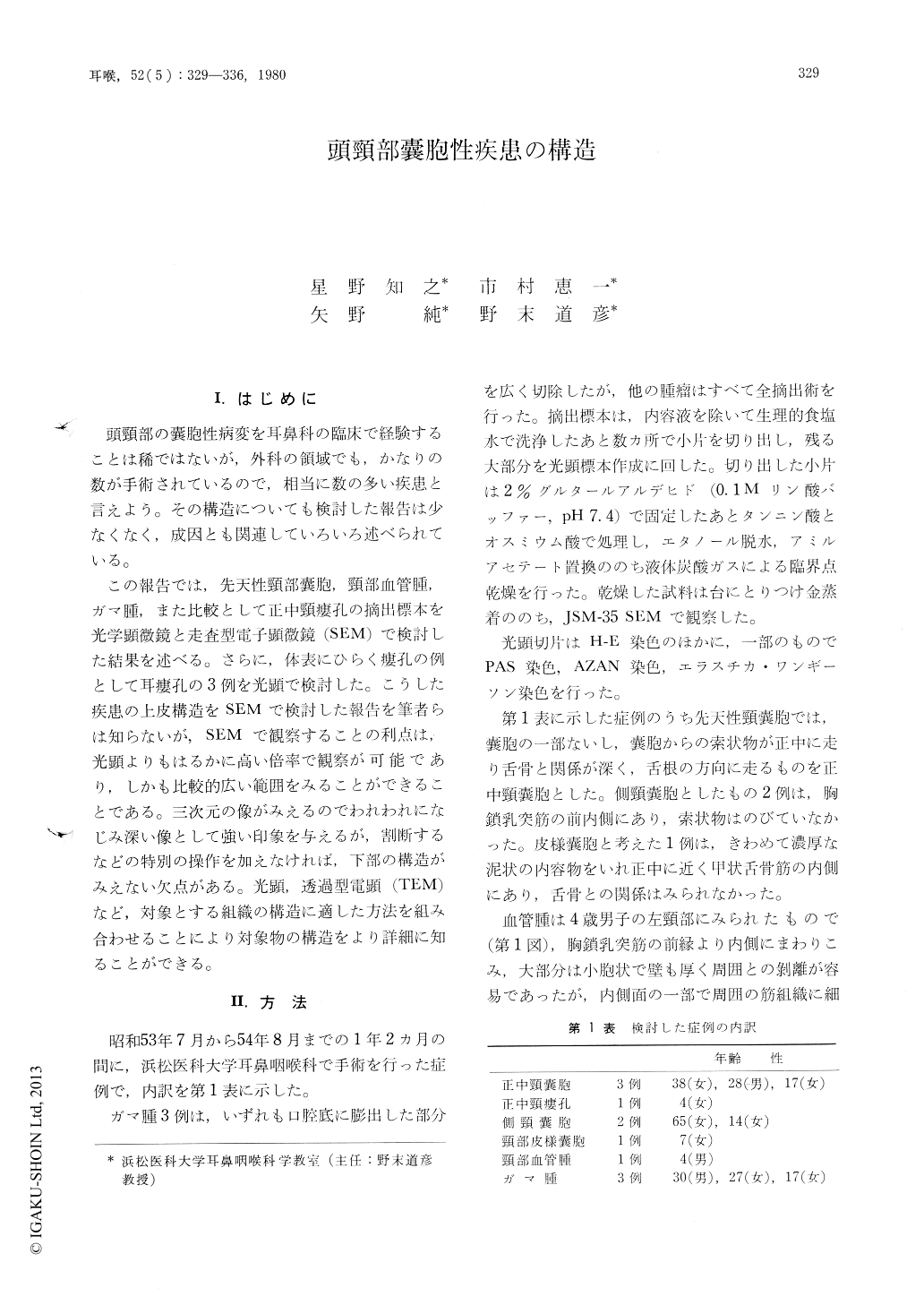Japanese
English
- 有料閲覧
- Abstract 文献概要
- 1ページ目 Look Inside
I.はじめに
頭頸部の嚢胞性病変を耳鼻科の臨床で経験することは稀ではないが,外科の領域でも,かなりの数が手術されているので,相当に数の多い疾患と言えよう。その構造についても検討した報告は少なくなく,成因とも関連していろいろ述べられている。
この報告では,先天性頸部嚢胞,頸部血管腫,ガマ腫,また比較として正中頸瘻孔の摘出標本を光学顕微鏡と走査型電子顕微鏡(SEM)で検討した結果を述べる。さらに,休表にひらく瘻孔の例として耳瘻孔の3例を光顕で検討した。こうした疾患の上皮構造をSEMで検討した報告を筆者らは知らないが,SEMで観察することの利点は,光顕よりもはるかに高い倍率で観察が可能であり,しかも比較的広い範囲をみることができることである。三次元の像がみえるのでわれわれになじみ深い像として強い印象を与えるが,割断するなどの特別の操作を加えなければ,下部の構造がみえない欠点がある。光顕,透過型電顕(TEM)など,対象とする組織の構造に適した方法を組み合わせることにより対象物の構造をより詳細に知ることができる。
Histological characteristics of cystic lesions in the head and neck, such as thyloglossal duct cyst and fistula, branchial cyst, dermoid cyst, hemangioma and ranula, were examined by light micro-scope and scanning electron microscope (SEM). Ciliated columnar epithelium was commonly found in the thyroglossal duct cyst but not in the branchial cyst. The fistula seemed to be a separate entity from the cyst, as the former was equipped with hair follicles and sebaceous glands but the latter was not. SEM was found to be an excellent tool to examine the epithelial lining of hemangioma and ranula.

Copyright © 1980, Igaku-Shoin Ltd. All rights reserved.


